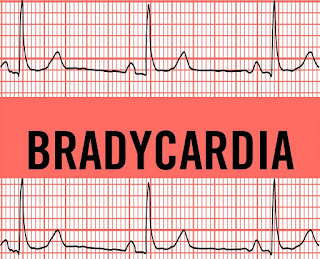Bradycardia during Anesthesia
Definition:
-Pulse rate less than 60 beats/min. in adults-Pulse rate less than 80 beats/min. in infants
-Pulse rate less than 100 beats/min. in neonates
Causes and Management:
1-Hypoxia:
-Late response is bradycardiaTreatment:
-Of the cause, Oxygenation, Anticholinergics
2-Drug induced:
-High-concentration volatile anesthetics, Opioids, Succinylcholine, Anticholinesterases (Neostigmine), Low dose atropine (Benzold-Jarisch reflex, paradoxical bradycardia), β-blockers, DigoxinTreatment:
-Decrease concentration of volatile anesthesia, Anticholinergics
3-Vagal stimulation:
- Airway instrumentation, Visceral traction, Extraocular muscle traction, Anal dilatation, Cervical dilatationTreatment:
-Stop traction or dilatation, Anticholinergics
4-Spinal anesthesia:
-High spinal anesthesia affecting T1-T4 (Cardiac accelerator fibers)Treatment:
-Support circulation, Anticholinergics, Ephedrine (if associated with hypotension)
5-Ischemic heart disease:
-Ischemic changes affecting the conducting systemTreatment:
-Anticholinergics if indicated
6-Endocrine disease:
-HypothyroidismTreatment:
-Anticholinergics
7-Metabolic:
-HyperkalemiaTreatment:
-Correction of potassium level, Anticholinergics
8-Neurological:
-Cushing’s reflex due to increased ICPTreatment:
-Of the cause, Anticholinergics if indicated
9-Cardiovascular fitness:
-Trained athlete (High resting vagal tone, Large stroke volume)N.B.: Anticholinergic drugs (Atropine, Glycopyrrolate, Hyoscine)

























